Childers, Ernest “Chief”, born 01-02-1918, in Broken Arrow, Tulsa County, Oklahoma, United States  to Ellis Buffentan Childers (1866–1930)
to Ellis Buffentan Childers (1866–1930)  and his wife Tennie Windom, born Starks, Childers (1883–1937)
and his wife Tennie Windom, born Starks, Childers (1883–1937) 
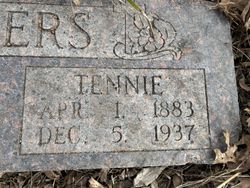 and was a member of the Muscogee (Creek) Nation.
and was a member of the Muscogee (Creek) Nation.
Ernest had five brothers and three half sisters and one half brother, Robert Wesley “Wes or Chief” Childres (1889–1988) 
 , Clarence Antwine Childers (1912–1945)
, Clarence Antwine Childers (1912–1945)  , Rev Anderson John Childers (1915–2001)
, Rev Anderson John Childers (1915–2001) 

 Anderson had service as a Master Sergeant in Korea, USAF, PFC US Army Ellis Buffington “Buck” Childers (1921–1989
Anderson had service as a Master Sergeant in Korea, USAF, PFC US Army Ellis Buffington “Buck” Childers (1921–1989 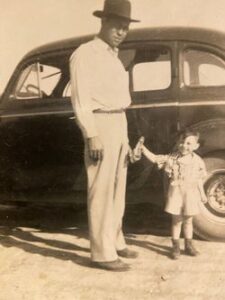
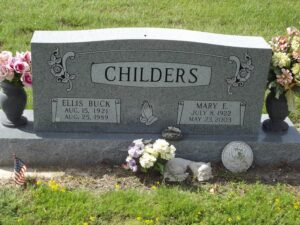 and PFC Owen Childers (1923–2014)
and PFC Owen Childers (1923–2014) 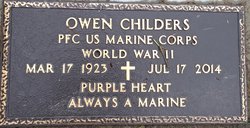 Owen served in the U.S. Marines during WWII. He was a Lieutenant Security for McDonnell-Douglas. Half brother Walter A. Childers (1888-1963)
Owen served in the U.S. Marines during WWII. He was a Lieutenant Security for McDonnell-Douglas. Half brother Walter A. Childers (1888-1963) 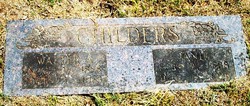 and half sisters, Irene Childers Starks (1890–1975)
and half sisters, Irene Childers Starks (1890–1975)  , Viola Childers (1895–1895)
, Viola Childers (1895–1895) 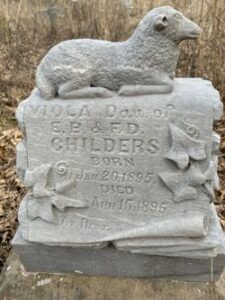 and Fannie Lee Childers (1896–1896)
and Fannie Lee Childers (1896–1896) 
One of five boys, Ernest and his brothers grew up extremely poor, and he would often tell the story that his family was unable to purchase meat, so he was given a single bullet a day to hunt rabbits. Dinner depended on his skill, and Childers quickly became a good shot. Childers attended the Chilocco Indian Agricultural School, 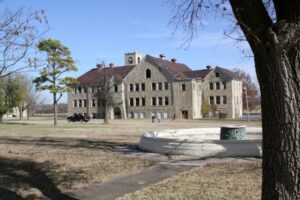 a boarding school for American Indian students, to learn vocational skills, though the quality of their education was far behind that of white students.
a boarding school for American Indian students, to learn vocational skills, though the quality of their education was far behind that of white students.
During World War II, more than 44,000 Native Americans joined the US armed forces.  Many young American Indian men considered being drafted an insult and chose to enlist before they could receive a draft notice. Countless more attempted to enlist but were rejected due to health issues as a result of the poverty in which many American Indians lived.
Many young American Indian men considered being drafted an insult and chose to enlist before they could receive a draft notice. Countless more attempted to enlist but were rejected due to health issues as a result of the poverty in which many American Indians lived.
It was as a student at Chilocco in 1937 that Childers joined a National Guard  unit which had been organized at the school. Childers graduated in 1940 and stayed with the National Guard through its transition to active duty as the 45th Infantry Division.
unit which had been organized at the school. Childers graduated in 1940 and stayed with the National Guard through its transition to active duty as the 45th Infantry Division. 
 under command of General Major William Shaffer Key
under command of General Major William Shaffer Key 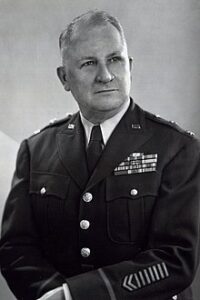

Before 1939, the division’s symbol was a red diamond with a yellow swastika, a tribute to the large Native American population in the southwestern United States. Ernest Childers remained with the 45th Division, moving through the ranks as the unit trained and prepared for action in Italy. At the close of the campaign in Sicily in August 1943, Childers received a battlefield promotion.
In September 1943, Childers was assigned to C Company, 180th Infantry Regiment, ![]() 45th Infantry Division. The 180th Infantry landed in Salerno on D+5, September 14, as Fifth Army
45th Infantry Division. The 180th Infantry landed in Salerno on D+5, September 14, as Fifth Army  under command of Lieutenant General Mark Wayne. ““Contraband” Clark
under command of Lieutenant General Mark Wayne. ““Contraband” Clark  , reserve. On September 22, the 45th Division was outflanking German positions defending the town of Oliveto in order to make an organized assault on the town. While trying to take Oliveto, Childers, then a seasoned combat veteran, learned his battalion was pinned down by machine gun and mortar fire. Although he was receiving aid for a broken foot, Childers put together a team of men to find and eliminate the enemy gun positions. Leading this small group, Childers displayed leadership and courage above and beyond the call of duty when he advanced towards German machine gun nests, dispatched their occupants, and took out enemy snipers.
, reserve. On September 22, the 45th Division was outflanking German positions defending the town of Oliveto in order to make an organized assault on the town. While trying to take Oliveto, Childers, then a seasoned combat veteran, learned his battalion was pinned down by machine gun and mortar fire. Although he was receiving aid for a broken foot, Childers put together a team of men to find and eliminate the enemy gun positions. Leading this small group, Childers displayed leadership and courage above and beyond the call of duty when he advanced towards German machine gun nests, dispatched their occupants, and took out enemy snipers.
Childers was wounded during the Battle of Anzio  and was recovering in a military hospital in Naples in the spring of 1944 when he was presented the Medal of Honor
and was recovering in a military hospital in Naples in the spring of 1944 when he was presented the Medal of Honor  by General Jacob Loucks “Jamie” Devers,
by General Jacob Loucks “Jamie” Devers, 
 the deputy commander of the Mediterranean theater. Receiving his Medal on 08- 04-1944,
the deputy commander of the Mediterranean theater. Receiving his Medal on 08- 04-1944,  Childers became the first American Indian awarded the Medal in World War II. The, “Fighting Thunderbirds”, was the division’s nickname. These Indian boys would become a part of a unique fighting group. Upon the liberation of Sicily in WW II, General George Smith Patton
Childers became the first American Indian awarded the Medal in World War II. The, “Fighting Thunderbirds”, was the division’s nickname. These Indian boys would become a part of a unique fighting group. Upon the liberation of Sicily in WW II, General George Smith Patton  would pay them the ultimate honor. “Born at sea, baptized in blood, your fame will never die. You are one of the best, if not the best division in the history of American arms.” For conspicuous gallantry and intrepidity at the risk of life above and beyond the call of duty in action,
would pay them the ultimate honor. “Born at sea, baptized in blood, your fame will never die. You are one of the best, if not the best division in the history of American arms.” For conspicuous gallantry and intrepidity at the risk of life above and beyond the call of duty in action,
Death and burial ground of Childers, Ernest “Chief”.

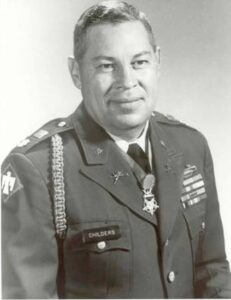

Childers survived the war and remained in the US Army until he retired in 1965 with the rank of Lieutenant Colonel. “Chief Childers died 17-03- 2005 (lage 87) in Broken Arrow, Tulsa County, Oklahoma, USA and is buried at Floral Haven Memorial Gardens Broken Arrow, Tulsa County, Oklahoma, United States. Perceel: Veterans Field of Honor, F21A..

















Leave a Reply